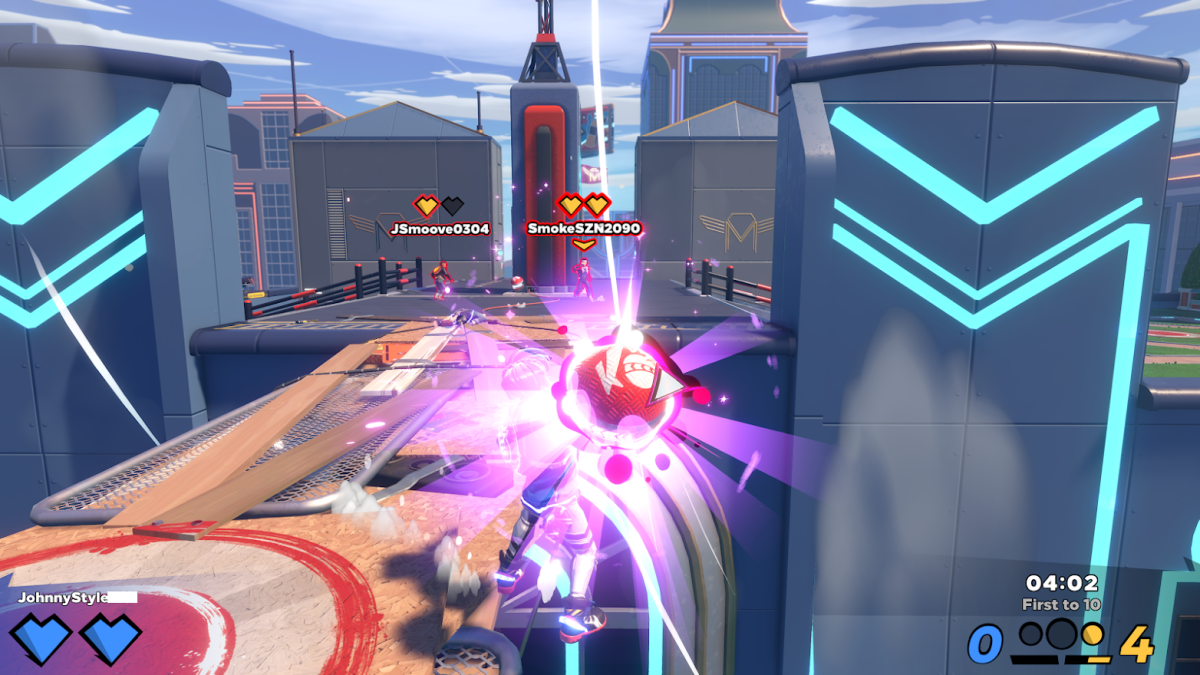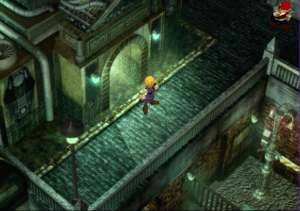
Some of the first video games were rudimentary versions of pong. Many different companies made stand alien boxes who’s sole purpose was to play this one game where players bounce a ball back and forth using paddles on each side that were controlled with a wheel like paddle. No buttons, barely any frills, just the joy of a simple volley and trying to out-maneuver your opponent.
These days video games can be a whole lifestyle, and some folks just play one game endlessly. Fortnite, a game about being the last person standing on an island like the movie Battle Royale has become a universe unto itself, used for promotion of recent Star Wars and Marvel movies, as the stage for virtual concerts and containing an evolving storyline of its own that is told in seasons, with real consequences to its virtual landscape. It is difficult to imagine how we got here from the humble days of pong. This week there is a game that was released that bridges the gap, capturing the simple joys of pong but with all of the cultural, visual and business model baggage of the modern era. But in my mind, that connection to the original simple ludological joy of play makes Knockout City worth checking out.

Knockout City at the time of this writing is totally free, and on everything under the sun. Here the business model trappings immediately rear their head as the game fights for a critical mass of players right from the start so that there are always people to play with. A multiplayer game without an audience is the video game equivalent of a ghost town, so the game is free till May 30th, the first ten days of it’s release. If you catch this blog the weekend it goes up, I encourage you to try it out, but if not I’d like to describe why it’s worth the investment regardless.
The game is essentially 3 vs 3 competitive dodgeball. You know, that sport everyone but the bullies dreaded in high school gym class that many states or school associations tried to make illegal. Still, despite the bullying baggage it is a refreshing change from games where you try to shoot someone no matter how cartoony the assassination attempt may be. The game is the most fun I’ve had since the other strange alternative sport of Rocket League a few years ago, where players drive cars to… play soccer. The gist of Knockout City is that each player has two health, and every time they are hit by a ball twice, that counts as a knockout for the other team. First team to ten knockouts wins. Players throw the ball using the right trigger, and just like in real dodgeball they can attempt to catch the ball with the left trigger, and consequently throw it back at their assailant. Players can charge their throw to zip the ball faster and there is a great timing element to catching the ball; too early or too late and you end up getting pegged in the face, just like real life. There is a red border that goes up on screen anytime you are being target with a helpful directional indicator to give you a chance to react before getting thwacked from behind.

This is where the pong comes into play, as every volley back and forth increases the speed of the interaction. A game of chicken ensues as players test their reaction time and positioning just like the game of yore, except with a lot more zazz. But the simple joy of the volley is there in spades. Every time I get hit by a ball in this game I feel like there was a chance I could have saved myself, and equally every time I land a hit I feel the joy of outsmarting or outmaneuvering an opponent.

This is the shining core of the whole thing. A modernized physics filled game of pong. Everything else layered on top is either to add diversity or nuance to the experience or to monetize it, like so many modern competitive games. Let’s touch on the fun stuff first since the team has built some fun system to add to this core of pong. First there is always a special dodgeball in play to mix up a given match. This could be a sniper ball, that take a moment extra to target but if aimed correctly zips in twice as fast, a cage ball that puts the player who is hit in a ball shaped cage which can then be deviously thrown off a cliff, or the delightful multi-ball that evokes it’s pinball namesake in allowing players to throw three balls rapid fire, right alongside the satisfying pinball sounds. In fact, all of the sound in this game deserves to be commended, from the strange disembodied announcer who apparently emcees these matches from the moon, to the perfect sounds of nailing someone with a dodgeball, which sounds exactly like it should. If these unique dodgeballs aren’t enough to mix it up there is always the ability to turn yourself into a ball and be used by a teammate to take out your enemy. This has the risk reward of being a one hit knockout, if you’re not caught and used to take out your own team.
The result of all of this flavor is the joyous shouts of success or groans of defeat that make a game like this shine. The game is silly, and it knows it, and this comes through in all aspects. There are different arenas with their own geography to capitalize on, as well as some more nuanced play hidden in the movement mechanics of the players, with the ability to dodge balls completely, tackle the ball out of an opponent’s hands or even lob or curve the ball like in a tennis volley. But time and again it comes back to the heart of pong.
As in most of these games the prize for your success is the ability to make your player character look positively ridiculous. Players unlock different outfits, dances, emotes etc. to customize their visual flair. This part of the game is monetized so players can shell out real money to buy whatever suits their fancy, but it’s entirely optional. Most games of this kind are free and entirely supported through this model, but given that the game will cost $20 after this initial free period, I’m not 100% clear on the eventual business model here. Still, I would argue that the core back and forth game of chicken is worth that $20. There’s plenty of depth here to explore and if it is anything like the other lifestyle games vying for folk’s time I imagine they will add more special dodgeballs, stages, and mechanics to keep the experience fresh.
I generally avoid these types of games as I don’t find the core loop of many of them to be terribly much fun, but I give this one a try because of all of the buzz I had heard online. I am here to amplify that buzz and encourage you to try it out as well. There is something that is pure and simple fun here like the games of yore. It will certainly leave less of a mark than a traditional rubber dodgeball and I assure you it’s fun for everyone this time, not just the bullies.





